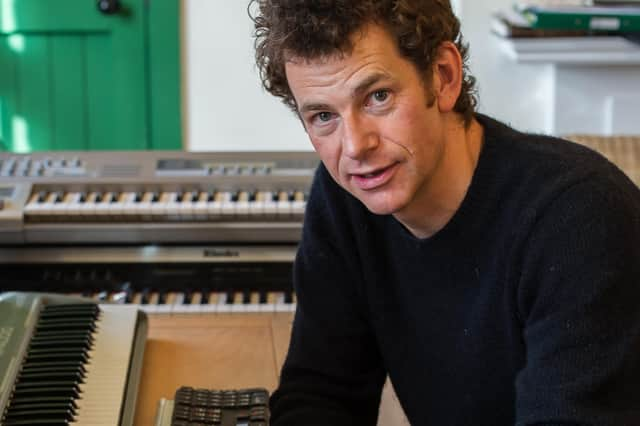Bignor Park-based Ned Bigham offers take on "morality, derision and peace"


It features a topline from Fred Lessore. Fred explains: “I wrote the topline for Won't Give In after I sang on a hill and prayed. It was a really lovely experience.
As Ned adds, Won’t Give In is a fable, grounded in resilience and a refusal to accept society’s demands for change: “The track draws the listener in with an intriguing soundscape, delicately balanced somewhere between RnB and orchestral pop.
Advertisement
Hide AdAdvertisement
Hide Ad" Lessore’s vocals bounce off their rounded textures, giving way to the alien baby choir of the song’s bonkers chorus. Before long, the song climaxes in stormy waves of hurricane horns and clashing cymbals. Lessore’s vocals soar high above them, gleaming in the dark to calm the chaos of the tempest.”
Ned offers the piece as a “fascinating take on morality, derision and peace.”
The original Anti Atlas project, featuring Chris and Ned, was born out of experimenting with orchestral samples to create exotic chill-out music.
The duo have previously released four albums – or strictly two albums, with a vocal and orchestral version of each. For Anti Atlas, Ned is hoping to release an EP before Christmas and then maybe another EP after Christmas, working towards an album: “With streaming on Spotify it is all about releasing singles and putting them together as EPs , and I have found that if you have already got a body of work all ready for release, then it works quite well. I think if you didn't have that body of work ready to go, then the pressure would be quite suffocating. It has certainly worked well for us.”
Advertisement
Hide AdAdvertisement
Hide AdNed added: “Really it began with me experimenting with orchestral samples of Mahler. I'm a big fan of his. I was trying looping them and adding beats and they just took on a life of their own. I played the ideas to Chris and he really liked what was happening and helped me finish them off and brought in a couple of cool studio guys. So really it was just me coming across some samples on my own and experimenting, revisiting some of the classic romantic composers but I was careful to use only samples from composers who died more than 70 years ago for copyright reasons but that meant working with some fascinating music from the late-19th and early-20th century. It is quite a treasure trove. The only restriction with sampling is that it is really like a collage. You're limited to what your collage snippets are. You can't compose in the same way that you do orchestrally, note after note. It is more a question of composing with blocks. You can't just change one note. You have to go with what is there. It is perhaps a bit more like collage painting, like Picasso or David Hockney. And it is fascinating. You feel a bit more like a collector or an assembler sometimes. It feels more like a jigsaw puzzle and that's really part of what makes it so interesting.”